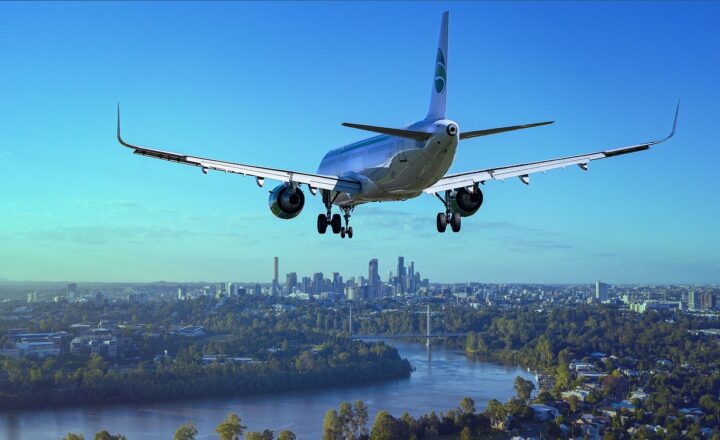The Craziest Emergency Landings in Aviation History and How They Happened
November 14, 2024

Aviation is often hailed as one of the safest modes of transportation, yet when things go wrong in the sky, they can result in harrowing stories that seem more fitting for a thrilling movie than reality. Emergency landings can occur for a myriad of reasons, including mechanical failures, medical emergencies, and severe weather, leaving both passengers and crew with an adrenaline-pumping tale to tell. In this article, we journey through some of the craziest emergency landings in aviation history, examining what transpired and how brave pilots and crew managed to bring their aircraft down safely.
1. The Gimli Glider: A Lesson in Fuel Management
On July 23, 1983, Air Canada Flight 143, known as the Gimli Glider, experienced a mechanical failure that turned into an incredible survival story. As the Boeing 767 cruised at 41,000 feet, the pilots realized that they had run out of fuel. During a routine stop at a fuel station prior to takeoff, an error in calculating the amount of fuel led to this terrifying predicament.
Captain Robert Pearson and First Officer Maurice Quintal had to act swiftly. With only a gliding distance of about 16,000 feet, the pilots skillfully navigated to the nearest location – an old airbase, Gimli Industrial Park. Remarkably, the pilots landed the plane on a former runway, successfully touching down without any serious injuries among the 61 passengers. The Gimli Glider has since become a symbol of resourcefulness and quick thinking in emergency aviation.
2. United Airlines Flight 553: A Deadly Mistake
On December 8, 1972, United Airlines Flight 553 was attempting to land at Chicago Midway International Airport when a tragic mistake took place. The aircraft was on final approach when the crew was informed that there was a problem with the landing gear. The pilots attempted to troubleshoot the situation, but minutes later, the situation escalated as the plane lost altitude rapidly.
During the landing, the aircraft struck a light pole before crashing onto the road beyond the airport. Despite the pilot’s efforts, the plane was unable to land successfully, resulting in the loss of life of 43 people. This incident highlighted the importance of proper communication and decision-making in the cockpit during crisis situations.
3. British Airways Flight 5390: The Miracle of Body Mechanics
On June 10, 1990, British Airways Flight 5390 was climbing to altitude when an explosive decompression occurred. A faulty windshield was to blame; it blew out, resulting in the pilot being partially sucked out of the aircraft. Captain Tim Lancaster was left precariously hanging outside the plane at 17,000 feet, held only by his seatbelt.
The quick actions of First Officer Alastair Atchison were crucial in averting disaster. He managed to gain control of the plane, despite the chaos unfolding. Using every ounce of strength, passengers and crew members worked together to pull the captain back inside. The plane eventually landed safely, demonstrating the importance of teamwork in unimaginable situations.
4. Ethiopian Airlines Flight 961: Terror in the Air
On November 23, 1996, Ethiopian Airlines Flight 961 was hijacked by three individuals who sought asylum in Australia. In a desperate act, the hijackers demanded the plane fly to Australia, ultimately leading to chaos mid-flight. As the situation escalated, the pilot attempted to land safely but was tragically unable to do so.
In a heart-stopping turn of events, the hijackers attempted to force the captain to commit to a perilous landing at the airport of their choice. However, the plane ran out of fuel, and the pilots were left to control a malfunctioning aircraft. Despite every effort to land safely, the crash resulted in the loss of 50 lives, but a few passengers managed to survive. The events of this tragedy have been scrutinized, highlighting the complexities of handling hijacking situations.
5. Qantas Flight 30: A Controlled Descent
On August 4, 2008, Qantas Flight 30, a double-decker Airbus A380, experienced engine failure shortly after takeoff from Los Angeles International Airport. Just after becoming airborne, two of the four engines on the aircraft failed, and which meant the plane was unable to maintain altitude.
The incident resulted in a textbook controlled descent back to the airport. The crew’s training and the aircraft’s robust systems enabled a successful emergency landing back in L.A. The aircraft landed without a further impact, demonstrating how well-trained crews and technologically advanced aircraft can mitigate emergencies.
Conclusion: Lessons Learned from the Skies
While emergencies in aviation can be startling and life-threatening, the brave actions of pilots, crew, and passengers can turn potential tragedies into survival stories. By learning from these critical events, aviation continues to evolve with improved safety protocols, technology upgrades, and better training for crew members. As we look up to the sky, we know that every silver lining comes from experiences learned through sheer courage and resilience.
Aviation history is filled with frightening moments that demonstrate human ingenuity. These emergency landings remind us of the unpredictable nature of flight, and they serve as a testament to the iron will of those on board who make decisions in the face of danger. The stories will forever be etched in the chronicles of aviation history as incredible examples of human tenacity.








